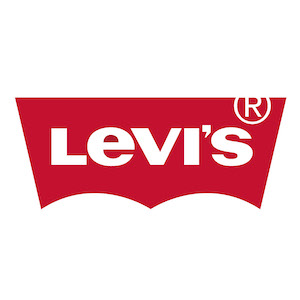First KeepCups, Now Clothes: Why Does Fashion Need To Be Sustainable, Anyway?
We need to keep embracing sustainable and responsible change in the fashion industry.


Levi's® is trying to change the clothing industry for good. Join us.
At this point, almost everyone owns a reusable coffee cup, metal straw, or bamboo toothbrush. It’s getting easier to live more sustainably, but there’s one area that we’re still learning about – sustainable fashion.
Here’s a scary statistic for you: the Intergovernmental Panel on Climate Change has attributed a whopping 10 percent of the world’s annual carbon emissions to fashion production. Right up there with the oil industry, the fashion industry is one of the most damaging to our precious natural environment.
But there’s a growing movement to make fashion more sustainable, with brands like Levi’s creating clothes that are made better, last longer, and made in a way that uses less resources and sends less harmful chemicals into our planet’s waterways. Here’s why we need to keep embracing sustainable and responsible change in the fashion industry.
Introducing: Fast Fashion
Over the better part of a decade, the fast fashion space has been booming. Born from the idea that fashion is seasonal and disposable, this trend has led to the average consumer buying some 60 percent more clothing than we did 15 years ago.
It’s also led to a sharp increase in production emissions, a dramatic rise in the resources consumed for manufacturing, more transport-related emissions, and a whole lot more items of clothing winding up in landfill.

Image: Amanda Vick / Unsplash
Luckily, fashion brands are moving away from fast fashion and towards more sustainable practices. Levi’s, for instance, is working to help change the clothing industry for good by creating clothes that can be kept for longer, by using more sustainable production techniques.
There’s still work to be done, but the right changes are starting to happen – and there are lots of ways consumers can help, too.
What Can We Do?
The good news is that there are things we can do to make more ethical and sustainable choices that support a better fashion future.
The first is to reassess how you deal with your existing wardrobe. Something got a hole in it? Before replacing it, consider taking it to someone proficient with a sewing machine so they can mend it for you. Have clothes you don’t wear anymore? Provided they’re still in good condition, drop them in your nearest charity bin or host a clothing swap party with your mates. If your unwanted clothing isn’t in great shape, repurpose it as rags or find a fun tutorial to make anything from bags to dog bandanas.

Image: Marília Castelli / Unsplash
When it comes to new purchases, try changing your shopping habits to buy better clothes that you can wear for longer. Levi’s iconic denim is made to last generations, not seasons, especially if you take good care of it. And Levi’s “buy better, wear longer” ethos is just scratching at the surface of their ongoing efforts towards more sustainable production.
Right now, 75 percent of the cotton Levi’s uses in their denim is sourced sustainably and they’ve already saved more than four billion litres of water by implementing their unique Water<Less® manufacturing technology. By 2025, they aim to source 100 percent of their cotton sustainably and to be using 100 percent renewable energy in all their owned and operated facilities.
Choosing to shop with more responsible brands and buying higher quality clothes that will stay in style and good shape for years to come has a multi-pronged effect. Not only will you be doing your bit for the environment and supporting the brands that are doing the same, but you’ll also start to see positive long-term effects on your bank account and in the longevity of your wardrobe.
—
Buying better and keeping the things we buy longer can reduce waste for the planet. Learn more at levis.com.au and levis.co.nz
—
(Lead image: Levi’s® presents creator and upcycler Emma Chamberlain. Courtesy of Levi’s®)